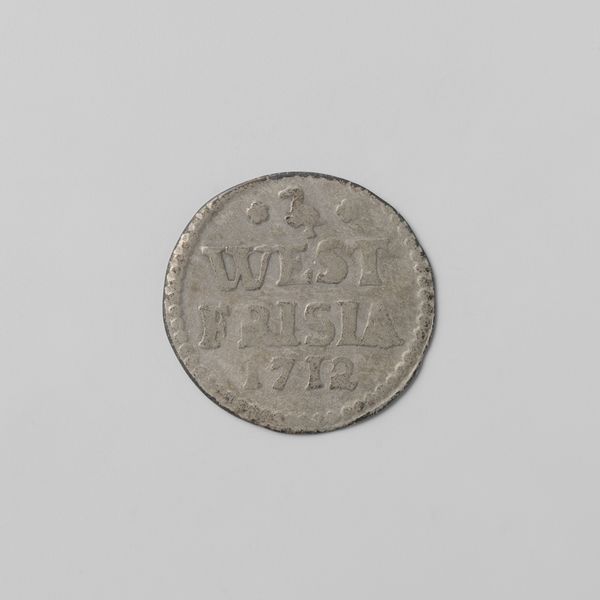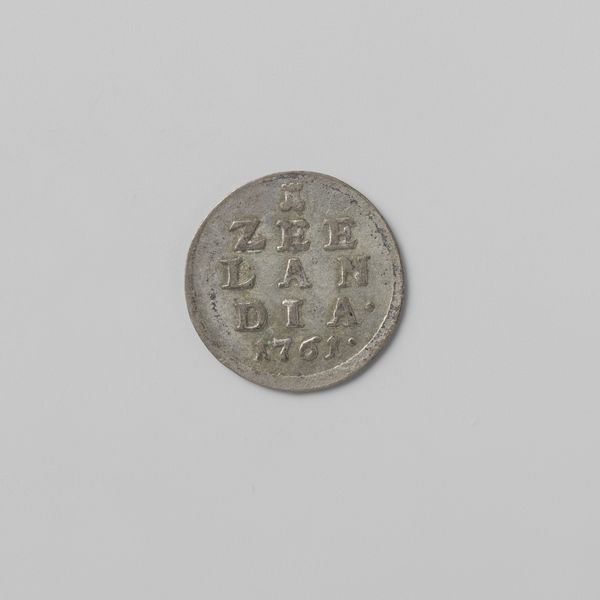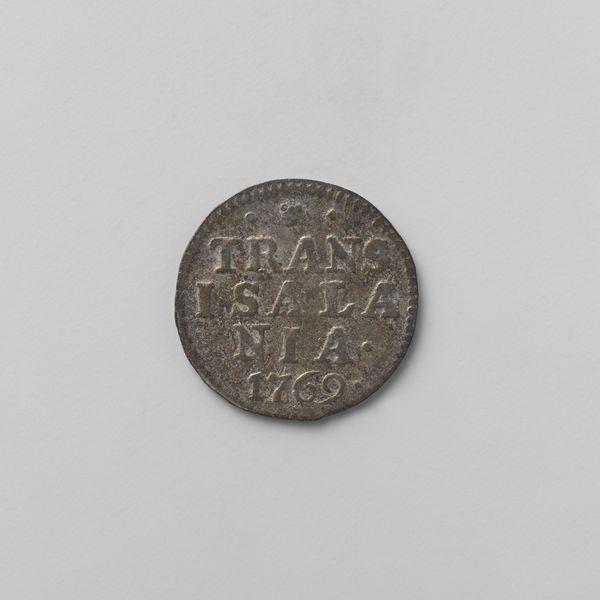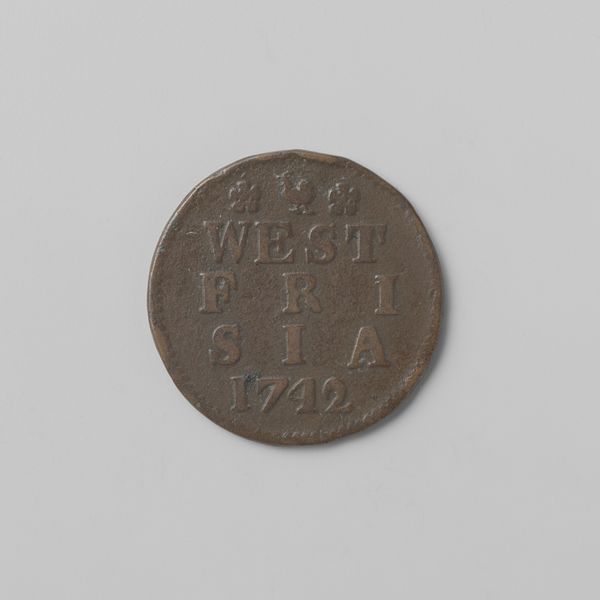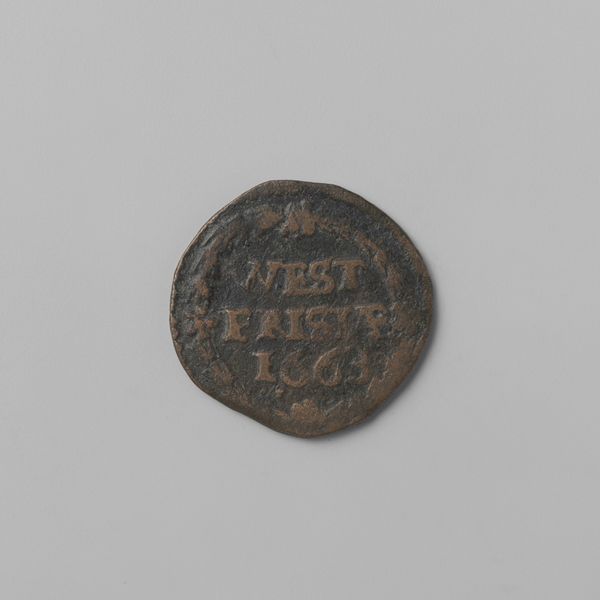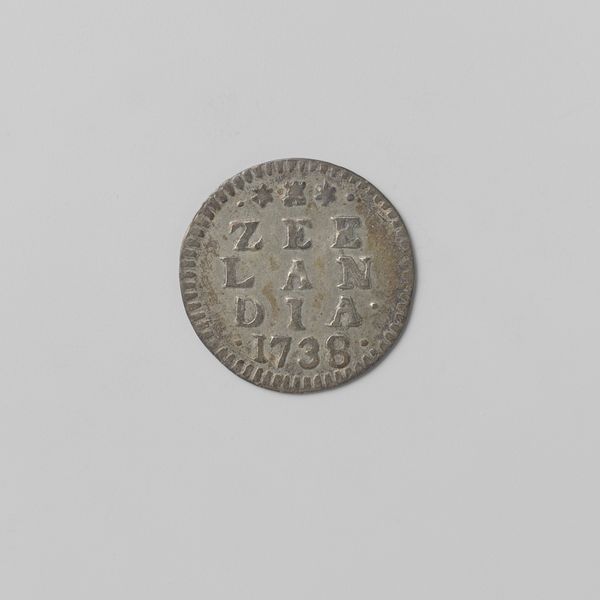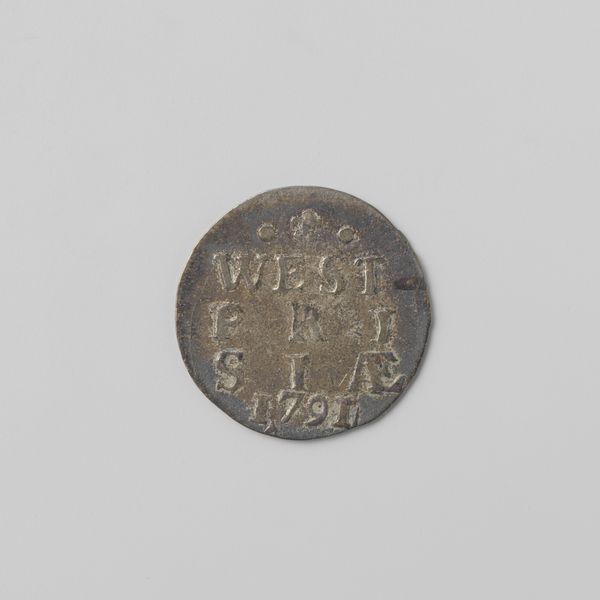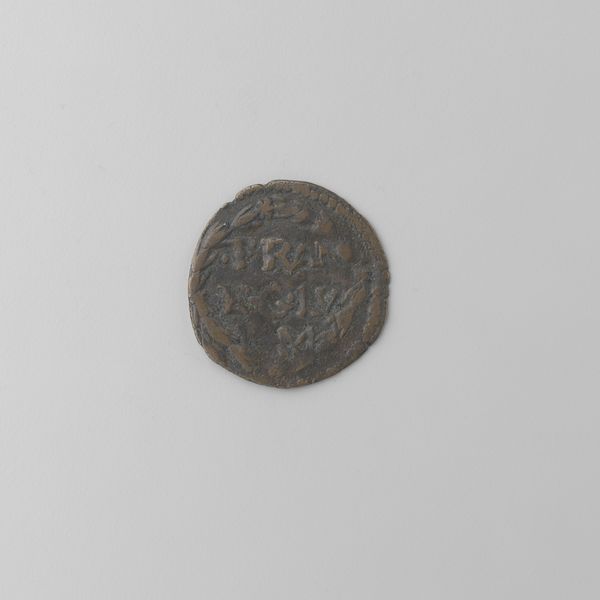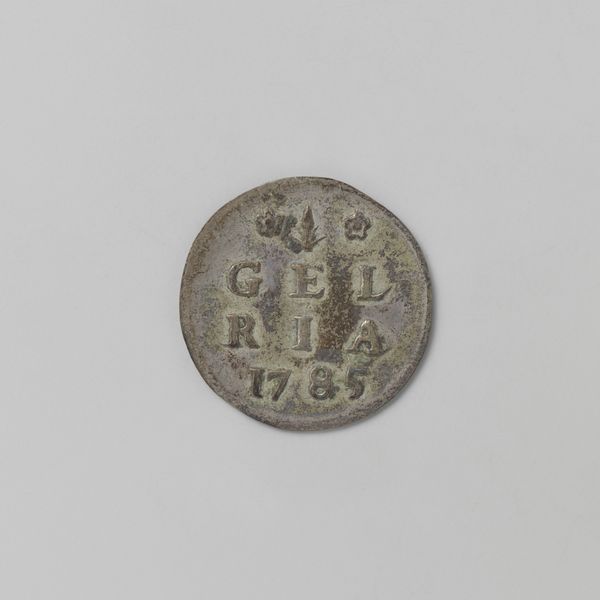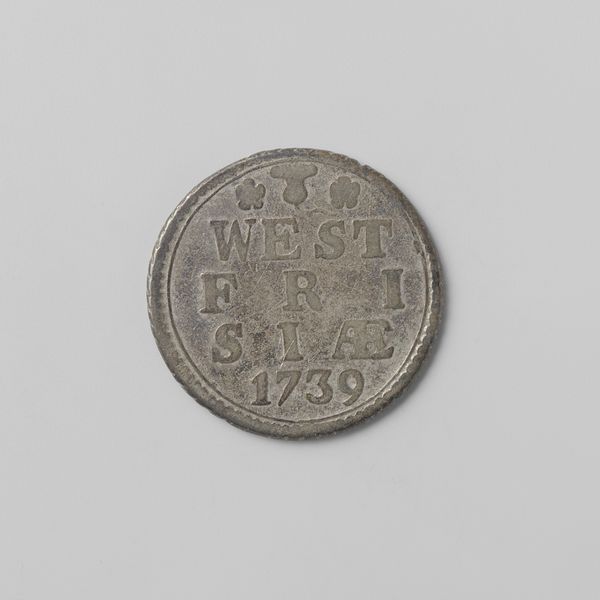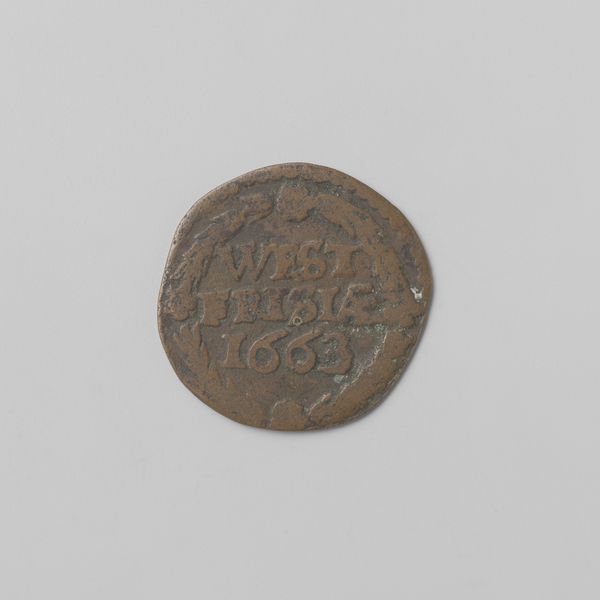
print, metal, photography, engraving
# print
#
metal
#
photography
#
engraving
Dimensions: diameter 1.7 cm, weight 0.82 gr
Copyright: Rijks Museum: Open Domain
This is a Westfriese bezemstuiver, made in 1766 by the regional authority of West Friesland. Though small, this coin speaks volumes about the intersection of craft and economy. Coins like this one were typically made through a process of die-striking, where a design is engraved into hardened steel dies, and then impressed onto a metal blank. The material is a base metal alloy, likely chosen for its durability and low cost, reflecting the modest value of the coin itself. The process of mass production is evident in its design, as the process must have required skilled engravers and metalworkers to produce dies and operate the coining machinery. The bezemstuiver played a crucial role in facilitating trade and commerce within West Friesland, connecting local producers and consumers, and enabling the exchange of goods and services. Considering the material, making, and social context of this coin allows us to appreciate its significance as a tangible artifact of economic and social life in the 18th century.
Comments
No comments
Be the first to comment and join the conversation on the ultimate creative platform.

